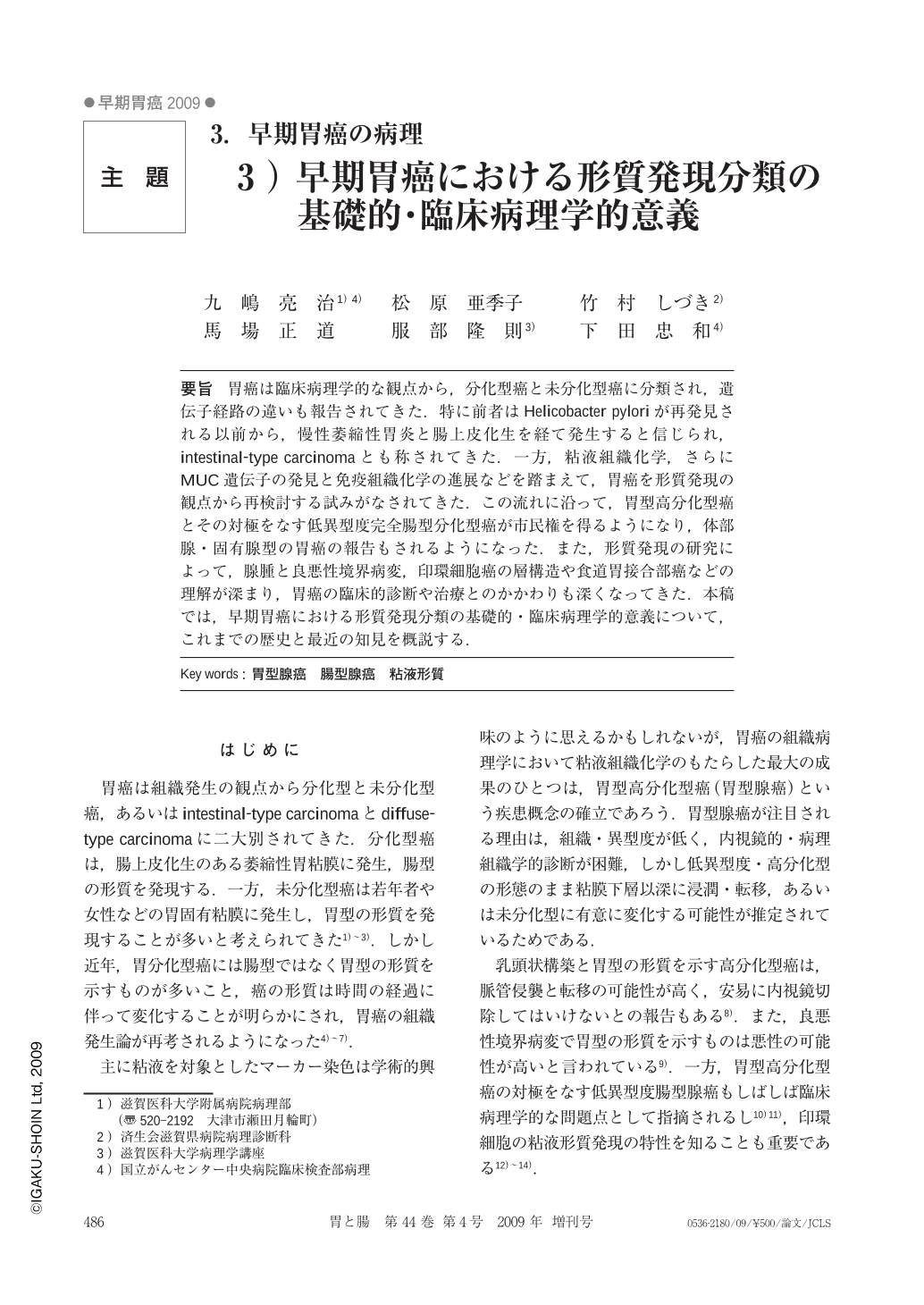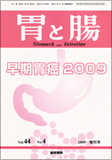Japanese
English
- 有料閲覧
- Abstract 文献概要
- 1ページ目 Look Inside
- 参考文献 Reference
- サイト内被引用 Cited by
要旨 胃癌は臨床病理学的な観点から,分化型癌と未分化型癌に分類され,遺伝子経路の違いも報告されてきた.特に前者はHelicobacter pyloriが再発見される以前から,慢性萎縮性胃炎と腸上皮化生を経て発生すると信じられ,intestinal-type carcinomaとも称されてきた.一方,粘液組織化学,さらにMUC遺伝子の発見と免疫組織化学の進展などを踏まえて,胃癌を形質発現の観点から再検討する試みがなされてきた.この流れに沿って,胃型高分化型癌とその対極をなす低異型度完全腸型分化型癌が市民権を得るようになり,体部腺・固有腺型の胃癌の報告もされるようになった.また,形質発現の研究によって,腺腫と良悪性境界病変,印環細胞癌の層構造や食道胃接合部癌などの理解が深まり,胃癌の臨床的診断や治療とのかかわりも深くなってきた.本稿では,早期胃癌における形質発現分類の基礎的・臨床病理学的意義について,これまでの歴史と最近の知見を概説する.
Gastric carcinomas are divided into differentiated type and undifferentiated types, and the difference in genetic pathway between these types has been reported. The formal type was believed to arise from intestinal metaplasia in chronic atrophic gastritis before the rediscovery of Helicobacter pylori, and it is also called intestinal-type carcinoma. On the other hand, characteristics of gastric carcinomas have been reevaluated in accord with their phenotypic expression, on the basis of mucin histochemistry and immunohistochemistry especially associated with MUC genes. From these investigations, gastric-type adenocarcinomas or low-grade small intestinal-type adenocarcinomas have become well understood. In addition, we have been able to further understand the clinicopathological importance of gastric adenomas/borderline lesions, layered structure of signet-ring cell carcinomas and esophago-gastric junctional carcinomas. In this chapter, we introduce and discuss the significance of analyzing the phenotypic expression of early gastric carcinomas.

Copyright © 2009, Igaku-Shoin Ltd. All rights reserved.


